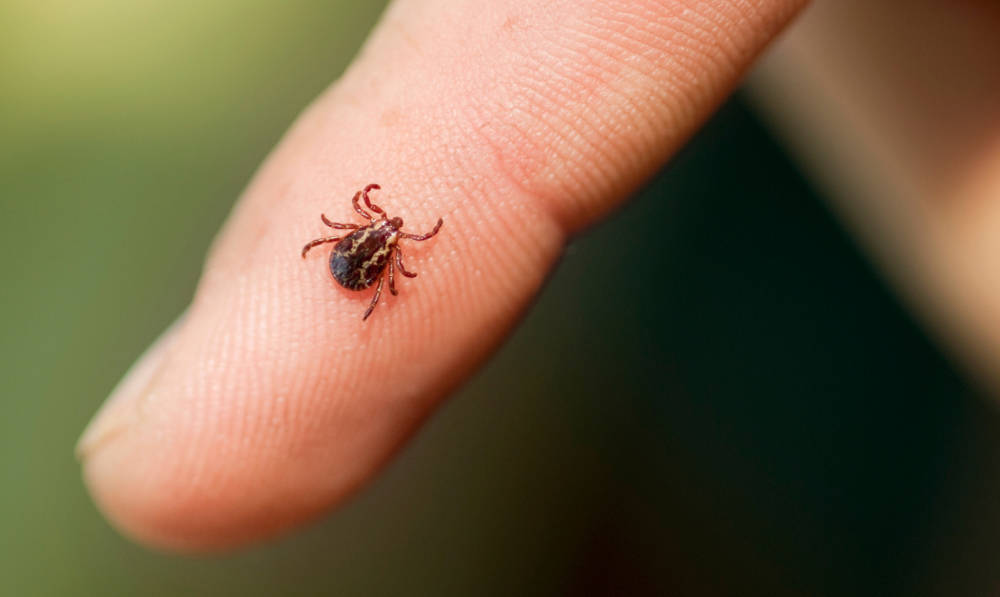KEY TAKEAWAYS:
Stay calm: Finding a tick on your body can be alarming, but it’s essential to remain composed to handle the situation effectively.
Remove the tick safely: Use fine-tipped tweezers to grasp the tick as close to the skin’s surface as possible and pull upward with steady, even pressure.
Clean the area: After tick removal, clean the bite area and your hands thoroughly with rubbing alcohol, iodine scrub, or soap and water.
Monitor for symptoms: Keep an eye on the bite area for several weeks and consult a healthcare provider immediately if you develop symptoms such as rash, fever, or body aches.
Take preventive measures: Reduce your risk of tick bites by wearing protective clothing, using insect repellent, avoiding tick habitats, and regularly checking your body for ticks after outdoor activities.
Ticks are tiny creatures that can cause big problems.
Found in grassy, wooded, and even urban areas, ticks are notorious for spreading diseases like Lyme disease, Rocky Mountain spotted fever, and more.
When you find a tick on your body, it’s important to act swiftly and correctly to minimize the risk of infection. Here’s what you need to do:
1. Stay Calm
Discovering a tick on your body can be alarming, but it’s crucial to remain calm. Panicking can make the situation worse, leading to rushed decisions or incomplete removal of the tick.
2. Remove the Tick Safely
The next step is to remove the tick as soon as possible. Use fine-tipped tweezers to grasp the tick as close to the skin’s surface as possible. Pull upward with steady, even pressure.
Avoid twisting or jerking, as this can cause the mouth-parts to break off and remain in the skin. If this happens, remove the mouth-parts with the tweezers.
3. Clean the Area
After removing the tick, clean the bite area and your hands thoroughly with rubbing alcohol, an iodine scrub, or soap and water.
4. Dispose of the Tick Properly
Dispose of the tick by flushing it down the toilet, placing it in a sealed bag or container, wrapping it tightly in tape, or submerging it in alcohol. Never crush a tick with your fingers.
5. Monitor for Symptoms
Keep an eye on the bite area for the next few weeks. If you develop a rash, fever, body aches, or any other unusual symptoms, contact your healthcare provider immediately. Be sure to inform them about the tick bite and when it occurred.
6. Seek Medical Attention if Necessary
In some cases, it may be necessary to seek medical attention. If the tick was attached for more than 24 hours, if you’re unable to remove the tick completely, or if you develop symptoms of a tick-borne illness, consult a healthcare professional promptly.
7. Take Preventive Measures
Prevention is key when it comes to tick bites. Reduce your risk by wearing long sleeves and pants when spending time outdoors, using insect repellent, and avoiding wooded or bushy areas with high grass and leaf litter.
8. Check for Ticks Regularly
After spending time outdoors, thoroughly check your body for ticks. Pay close attention to areas such as the scalp, behind the ears, in the armpits, and around the waistband and groin.
Summary
Finding a tick on your body can be unsettling, but knowing how to respond can help minimize the risk of tick-borne illnesses.
By following these steps—removing the tick promptly, cleaning the bite area, monitoring for symptoms, and seeking medical attention if necessary—you can protect yourself and your loved ones from the potential dangers of tick bites.
Prevention is key, so take precautions when spending time outdoors and always be vigilant. Also, take a few minutes to learn about what to do if you find ticks on your dog or other furry friend.

